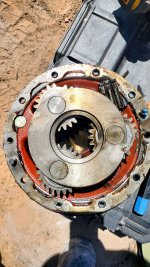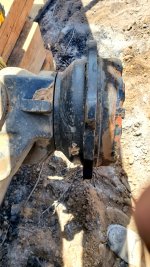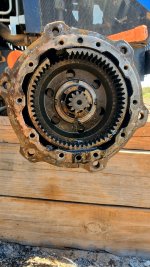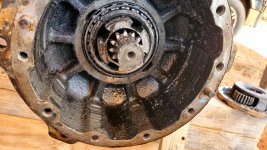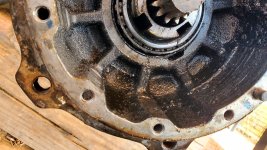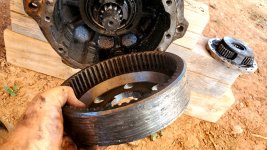Rocking 74
New member
- Joined
- Apr 4, 2024
- Messages
- 10
- Tractor
- New Holland T4.75
I need some help diagnosing a recurrent issue with my front final end drive on my MFWD T4.75. The sun (part # 5191412) & planetary gears (5165273) housed in the hub locked up somehow resulting in the planetaries loosing some teeth and the sun gear ground completely smooth. The Hub (87542225) was a little scored but the Gear ring (5165273) & Disc (5173284) were both in good shape. I was deep chiseling at the time with A/C on, with high RPMs and did not hear all the grinding. Had plenty of oil (used New Holland's hydraulic transmission fluid as recommended by service department). I had this same issue occur about 2 months ago. The seals in this steering knuckle are also constantly leaking and needing replacement. This was a rental tractor I purchased from a local dealer. As far as what it is used for I plant a 25 acre field twice a year, 6 point chisel, grade roads, remove hay from field, and currently lifting burned out stumps to clear a new pasture. This issue does seem to occur after using the front end loader.
Questions condensed
1. What is eating my front axle hub components?
2. What oil should I be putting in the hub transmission V gear oil
3. Why are the seals (47123727) at the base of the hub continually leaking? Could this rental tractor have been abused and I have not located the defective part?
The pictures below are from the aftermath earlier this month. We replaced everything in February. It almost looks like the inner ring failed, possibly due to it being weakened the last time the gears shredded, and a piece of it fell off and caused a chain reaction of destruction.
I appreciate your help and candor.
Questions condensed
1. What is eating my front axle hub components?
2. What oil should I be putting in the hub transmission V gear oil
3. Why are the seals (47123727) at the base of the hub continually leaking? Could this rental tractor have been abused and I have not located the defective part?
The pictures below are from the aftermath earlier this month. We replaced everything in February. It almost looks like the inner ring failed, possibly due to it being weakened the last time the gears shredded, and a piece of it fell off and caused a chain reaction of destruction.
I appreciate your help and candor.
Attachments
Last edited:
